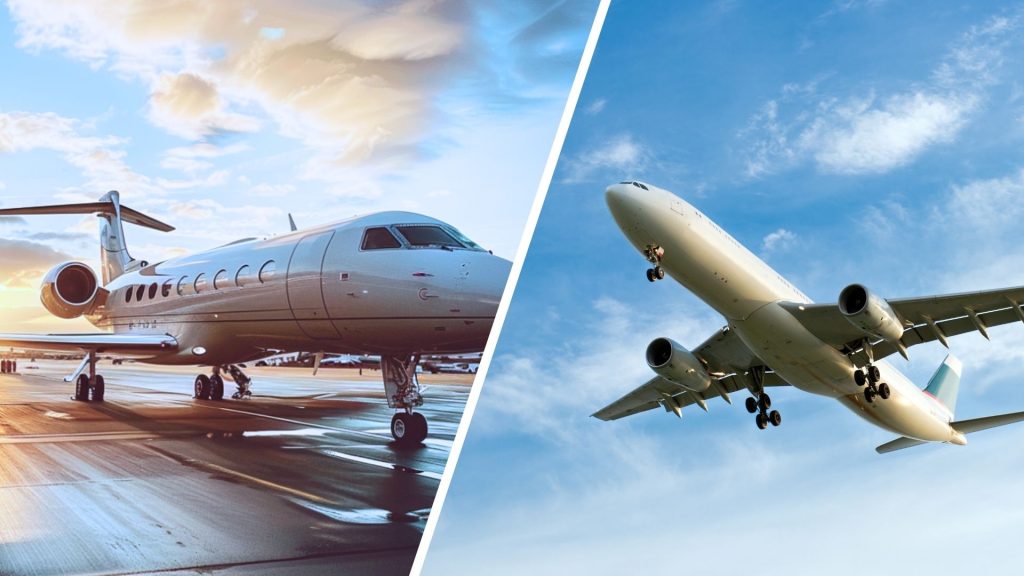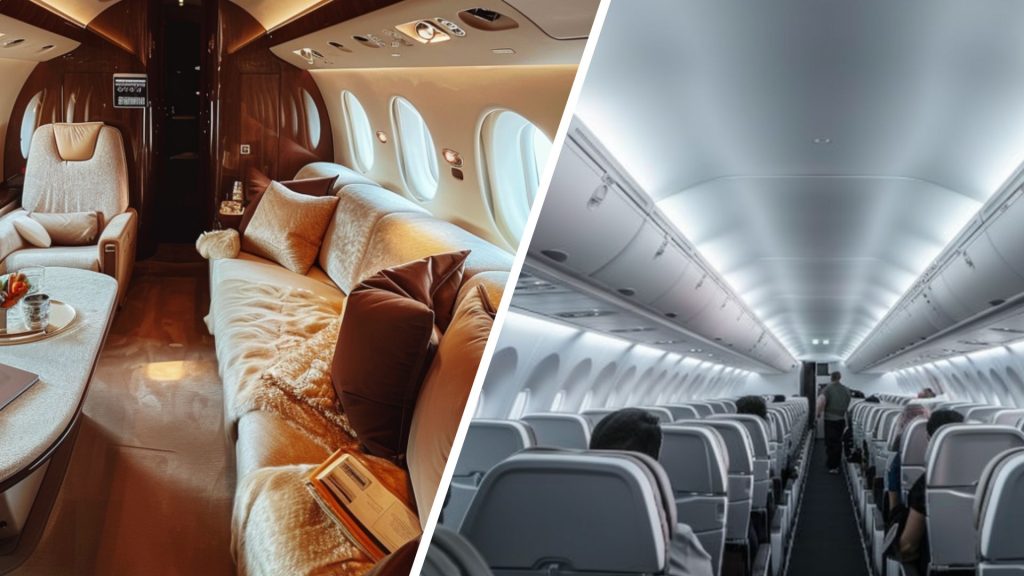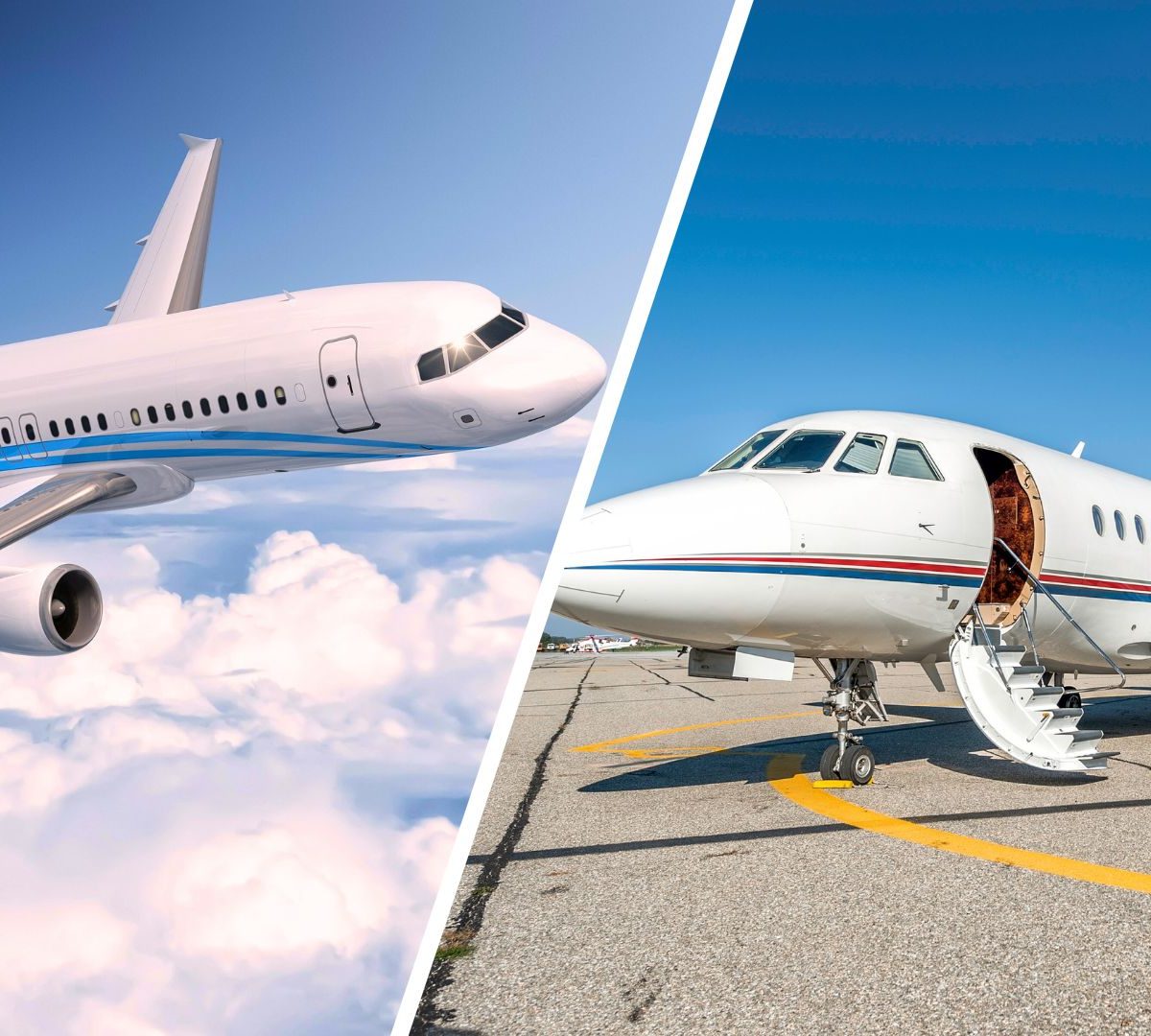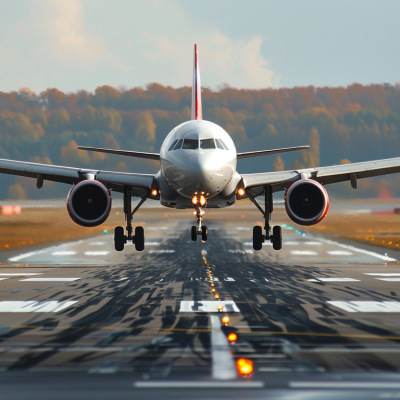Curious about the difference between planes and jets? You’re not alone! Many struggle to understand what sets these two aircraft apart, leading to confusion and misconceptions.
But fear not! This comprehensive guide will clear the air and explore the key differences between planes and jets.
We’ll cover everything from how they’re powered to their speed, size, and typical uses.
Get ready to discover the fascinating world of aviation and finally understand what makes planes and jets unique.
Whether you’re a frequent flyer or an aviation enthusiast, this guide will give you the knowledge you need to impress your friends and make informed decisions when booking your next flight.
Let’s take off and dive into the exciting realm of planes and jets!
Basic Differences Between Airplane and Jet

An airplane is any powered, fixed-wing aircraft that uses lift generated by its wings to fly.
Jets, however, are a specific type of airplane that uses jet engines for propulsion. This means that while all jets are airplanes, not all airplanes are jets.
The primary difference lies in the type of engines used. Jets employ jet engines, either turbojets or turbofans, which operate by sucking in air, compressing it, mixing it with fuel, and igniting the mixture to generate high-speed exhaust that propels the aircraft forward.
Propeller planes, in contrast, rely on piston engines or turboprops that turn propellers to create thrust.
Jets’ sleek, aerodynamic design suits them for long-distance, high-speed travel, while propeller planes often feature a more rugged, versatile design ideal for regional and shorter routes.
Historical Development
The history of aircraft development spans from the early days of propeller planes to the emergence of jet technology.
The Wright brothers’ successful flights in the early 1900s marked the beginning of the propeller era, with advancements during the World Wars leading to improved propeller aircraft.
Jet technology emerged in the 1930s and 1940s, thanks to pioneers like Frank Whittle and Hans von Ohain. While jet aircraft saw limited use in World War II, they rose to prominence in the post-war period, transforming commercial and military aviation.
Significant milestones in engine technology were achieved for propeller planes, with more powerful and reliable radial engines being developed. Iconic aircraft models played crucial roles in various conflicts and commercial aviation.
On the jet front, groundbreaking models like the Boeing 707 and Douglas DC-8 ushered in the jet age of air travel. In contrast, innovations such as turbofan engines and supersonic jets like the Concorde pushed the boundaries of speed and performance.
Key Differences Between Airplane and Jet
1. Engine Type
At the heart of the distinction between jets and turboprops lie their engines.
Jet engines, including turbojets and turbofans, operate on the principle of jet propulsion. They work by sucking in air at the front of the engine, compressing it, mixing it with fuel, and igniting the mixture.
The resulting high-speed exhaust gas is expelled at the back, generating forward thrust.
Plane engines, on the other hand, use a gas turbine to drive a propeller. The turbine extracts energy from the hot exhaust gases to turn a shaft connected to a reduction gearbox that spins the propeller.
The propeller provides most of the thrust, with a small amount coming from the exhaust gas.
While both types of engines rely on gas turbines, the key difference is that jet engines use the exhaust for direct thrust, while turboprops use it to power a propeller.
This fundamental distinction influences the performance characteristics of jets and turboprops.
2. Performance and Speed
Performance and speed are critical factors in aviation, and jets and planes differ significantly.
Jets are known for their superior speed capabilities. The high-velocity exhaust from jet engines allows these aircraft to fly at high subsonic and even supersonic speeds.
Jets can also climb quickly and reach higher altitudes, where thinner air reduces drag and allows for more efficient cruising.
In contrast, planes have lower speed capabilities due to propeller efficiency limitations. Propellers lose effectiveness at high speeds and altitudes, restricting turboprops to slower speeds and lower cruising altitudes than jets.
To illustrate, a typical commercial jet like the Boeing 737 can cruise around 400-500 knots at altitudes above 30,000 feet.
However, a turboprop like the Bombardier Q400 has a cruising speed of around 360 knots and typically flies at 25,000 feet or lower.
3. Operational Uses
The distinct performance profiles of jets and planes make them suited for different operational roles.
In commercial aviation, jets dominate long-haul and high-capacity routes. Their speed and altitude capabilities allow them to cover long distances efficiently and offer a smoother ride above weather systems. Almost all major airlines rely on jets for their main passenger services.
With their efficiency at lower speeds and altitudes, Planes are often used for regional and short-haul flights.
They are well-suited for routes with shorter distances and lower passenger volumes. Many regional airlines and feeder services link smaller cities to major hubs using turboprops.
In private and business aviation, jets offer speed and prestige for executive travel and luxury tourism.
With their lower costs and versatility, Turboprops are popular for utility roles, cargo transport, and accessing smaller airfields.
4. Cost Implications
The costs of operating and maintaining jets and turboprops can vary significantly.
Jets have higher costs due to several factors. They consume more fuel, particularly during takeoff and climb phases.
Jet fuel is also typically more expensive than aviation gasoline, which is used in many turboprops. Jet engines are also more costly to maintain and overhaul than plane engines.
Planes generally have lower operating costs due to lower fuel consumption and simpler systems.
This is particularly true for short-haul flights, where planes spend more time in their efficient cruise phase. Lower maintenance requirements also contribute to cost savings.
5. Physical and Capacity Differences

Jets and planes also differ in their physical size and passenger capacity.
Jets, designed for speed and altitude, have long, sleek fuselages to minimize drag. This streamlined shape, combined with their larger size, allows jets to carry more passengers and cargo.
A narrow-body jet like the Boeing 737 can seat around 150-200 passengers, while a wide-body like the Boeing 747 can accommodate over 400. Jets also have spacious cargo holds for luggage and freight.
Planes optimized for lower altitudes and speeds have a more bulky appearance. Their fuselages are shorter and wider to accommodate the propeller clearance, which limits their passenger capacity compared to similarly sized jets.
These physical differences impact comfort and amenities. Jets offer more headroom, larger overhead bins, and often features like in-flight entertainment systems.
While offering less space, planes can still provide a comfortable ride, particularly on shorter flights.
6. Range and Efficiency
Range, the maximum distance an aircraft can fly, is another key differentiator between jets and turboprops.
With their high speed and altitude capabilities, Jets can cover much longer distances non-stop. Long-haul jets like the Boeing 777 or Airbus A350 can fly over 8,000 nautical miles, connecting distant global cities.
Planes’ ranges are limited by lower speeds and altitudes. A typical turboprop, like the ATR 72, ranges around 1,000 nautical miles.
This makes planes unsuitable for long-haul routes but efficient for short-haul and regional operations.
Efficiency is where planes shine. Their lower fuel consumption and ability to operate from smaller airports make them highly efficient for short-distance flights.
On routes under 500 miles, planes can be more fuel-efficient per seat than jets.
7. Noise and Comfort
Noise levels and passenger comfort are important factors when comparing jets and planes.
Due to their high-speed exhaust, jets produce more noise than turboprops. This is particularly noticeable during takeoff and landing.
However, inside the cabin, jets are often quieter than planes.
The location of the engines, usually mounted under the wings, keeps much of the noise away from the passenger cabin.
With their propellers, planes generate a distinctive low-frequency hum that can be more noticeable inside the cabin.
However, modern planes have significantly reduced interior noise levels through advanced insulation and soundproofing.
Regarding comfort, jets offer a smoother ride at higher altitudes, above much of the weather. The pressurized jet cabin also allows for a more comfortable atmosphere.
Planes flying at lower altitudes may cause more turbulence. However, the lower cruising altitudes of turboprops can offer better views of the landscape below.
8. Environmental Impact
With their higher fuel consumption, Jets produce more carbon dioxide (CO2) emissions per passenger mile than planes. This is particularly significant on short-haul routes where jets operate less efficiently.
Planes, with their lower fuel burn, have a smaller carbon footprint. This makes them an attractive choice for environmentally conscious airlines, especially on regional routes.
However, it’s important to note that planes emit less CO2; due to their lower operating altitudes, they can produce more nitrous oxides and other pollutants.
The aviation industry is working to reduce the environmental impact of jets and planes. This includes developing more fuel-efficient engines, using lighter materials, and improving aerodynamics.
Introducing sustainable aviation fuels derived from renewable sources could significantly reduce the carbon emissions of both aircraft types.
9. Operational Considerations
Beyond performance and cost, several operational factors influence the choice between jets and turboprops. Airport accessibility is a key consideration.
- Runways: Jets require longer runways for takeoff and landing, limiting their ability to serve smaller airports. With their lower speed and better short-field performance, planes can access a wider range of airports, including those with shorter runways.
- Pilot Training: Jet pilots generally require more extensive and specialized training due to the complexity of jet systems. While still rigorous, plane training may be less demanding due to the lower speeds and altitudes.
- Maintenance: Jets require more intensive and frequent maintenance due to their complex systems and high-performance engines. Planes, on the other hand, often have lower maintenance requirements due to simpler systems and a more rugged design.
- Operational flexibility: Jets offer flexibility in terms of speed and range, allowing them to reposition and serve distant markets quickly. Planes provide flexibility in serving smaller markets and operating from a wider range of airports.
Airlines often balance their fleets with a mix of jets and turboprops to maximize operational flexibility and match aircraft to route requirements.
The choice between a plane and a turboprop ultimately depends on a complex interplay of performance, cost, environmental, and operational factors specific to each airline and market.
Advantages and Disadvantages: Jets vs. Turboprops
| Feature | Jets | Planes |
|---|---|---|
| Advantages | Faster travel times | – Cost-efficient |
| – Avoids weather and traffic | – Accesses more locations | |
| – More comfortable flights | – Suitable for noise-sensitive areas | |
| Disadvantages | – More expensive | – Slower speeds |
| – Greater environmental impact | – More exposure to weather |
Conclusion
Understanding the key differences between jets and planes is essential for anyone interested in aviation or looking to make informed travel decisions.
Jets and planes have unique strengths and weaknesses, from their distinct engine types and performance capabilities to their operational roles and environmental impact.
While jets offer unmatched speed, range, and altitude capabilities, planes excel in cost-efficiency, accessibility, and versatility.
The choice between the two ultimately depends on route requirements, passenger demands, and airline business models.
As technology advances and environmental concerns shape the industry, jets and turboprops will evolve to meet aviation’s changing needs.
By staying informed about these differences, you can better appreciate the complex world of aircraft and make choices that align with your travel preferences and priorities.






